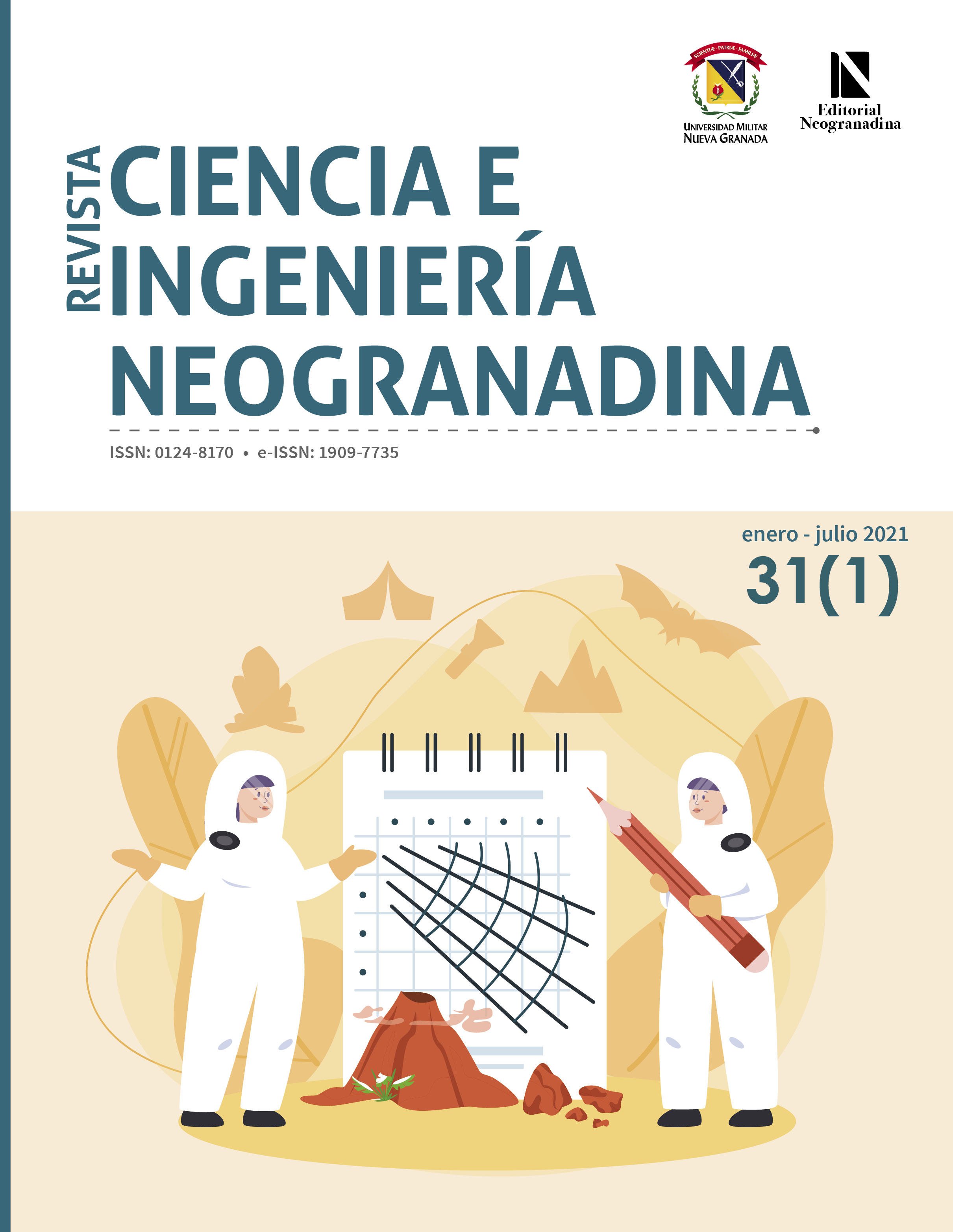Determination of Critical Mud Window Pressures by Applying Analytical Models and Geo-Mechanical Characterization
Abstract
In Colombia, sedimentary basins are structurally complex and have a high tectonism, meaning that drilling operations in hydrocarbon deposits are also complex and, consequently, causing time and money losses to the hydrocarbons industry. Applying areas of knowledge such as geomechanics is a viable solution to the challenge of stabilizing wells. This study proposes algorithms to evaluate pre-existing models, with new models describing the concentration of the stresses around the well and the failure criterion, establishing the failure relationship between rock resistance and the stresses it concentrates. This allows to describe the stress state of the well wall by combining tension and compressional failure criteria to obtain critical fracture and collapse pressures, respectively. Along with pore pressure, those pressures are the components of the mud window, with which the well stability can be improved, from the weight of the mud and the direction of the well. It was found that, in tension models, with respect to tension critical pressure, the regions are found for Azwell between 150-330° and 180-360° and Incwell between 60° and 90°. Also, that lower overbalanced values agree with the most stable direction, which is found for Incwell at approximately 0-20°, which makes low-slope wells to show more evenly distributed stress, compared to highly diverted wells.
Downloads
References
H. Mora-Páez y C. M. Jaramillo, “Aproximación a la construcción de cartografía social a través de la geomática”, Ventana Informática, vol. 11, pp. 129-146, 2018.
O. Heidbach et al., “The World Stress Map Database Release 2016: Crustal Stress Pattern Across Scales”, Tectonophysics, vol. 744, pp. 484-498, 2018. Doi: https://doi.org/10.1016/j.tecto.2018.07.007
H, Soroush, “Discover a Career in Geomechanics." The Way Ahead, vol. 9, n.° 3, pp. 15, 2013. Doi: https://doi.org/10.2118/0313-015-TWA
M. A. Addis, “The Geology of Geomechanics: Petroleum Geomechanical Engineering in Field Development Planning”, Geological Society, London, Special Publications, vol. 458, n.° 1, pp. 7-29, 2017. Doi: https://doi.org/10.1144/SP458.7
G. Osorio y C. F. Lopez, “Geomechanical Factors Affecting the Hydraulic Fracturing Performance in a Geomechanically Complex, Tectonically Active Area in Colombia”, en Latin American and Caribbean Petroleum Engineering Conference, Cartagena de Indias, Colombia, 2009. Doi: https://doi.org/10.2118/122315-MS
F. Fernández-Ibáñez et al., “3D Geomechanical Modeling for the Apiay and Suria Oil Fields (Llanos Orientales Basin, Colombia): Insights on the Stability of Reservoir-Bounding Faults”, en SPE Latin American and Caribbean Petroleum Engineering Conference, Lima, Perú, 2010. Doi: https://doi.org/10.2118/138869-MS
C. Guerra, K. Fischer y A. Henk, “Stress Prediction Using 1D and 3D Geomechanical Models of a Tight Gas Reservoir —A Case Study from the Lower Magdalena Valley Basin, Colombia”, Geomechanics for Energy and the Environment, vol. 19, p. 100113, 2019. https://doi.org/10.1016/j.gete.2019.01.002
L. A. Medina y A. N. Tutuncu, “3-D Geomechanical Modeling for Field Development of a Colombian Shale Play,” en Unconventional Resources Technology Conference (urtec) of Society of Exploration Geophysicists, Denver, Colorado, 2019, pp. 3897-3916. Doi: https://doi.org/10.15530/urtec-2019-467
O. Carvajal y C. Sierra, “Risk Mitigation in Overpressured Wells Through Geomechanical Approach”, en spe Latin American and Caribbean Petroleum Engineering Conference, Virtual, 2020. Doi: https://doi.org/10.2118/199141-MS
Amoco Corporation –Amoco, “Wellbore Stability Drilling Handbook”. ee. uu., Amoco Corporation, 1997.
R. F. Mitchell y S. Z. Miska, “Fundamentals of Drilling Engineering”, Houston [tx]: Country of publication: Society of Petroleum Engineers, 2011.
X. Chen, C. P. Tan y C. M. Haberfield, “A Comprehensive, Practical Approach for Wellbore Instability Management”, spe Drilling & Completion, vol. 17, n.° 04, pp. 224-236, 2002. Doi: https://doi.org/10.2118/80146-PA
S. Li, J. George y C. Purdy, “Pore-pressure and Wellbore-Stability Prediction to Increase Drilling Efficiency”, Journal of Petroleum Technology, vol. 64, n.° 02, pp. 98-101, 2012. Doi: https://doi.org/10.2118/144717-JPT
C. Anyanwu et al., “Analysis of Wellbore Stability in Multilateral Well Design and Construction”, en SPE Nigeria Annual International Conference and Exhibition, Lagos, Nigeria, 2013. Doi: https://doi.org/10.2118/167546-MS
S. Wessling et al., “Automation in Wellbore Stability Workflows”, en spe Intelligent Energy International, Utrecht, The Netherlands, March, 2012. Doi: https://doi.org/10.2118/149766-MS
E. G. Kirsch, Die Fundamentalgleichungen der Theorie der Elasticität fester Körper, hergeleitet aus der Betrachtung eines Systems von Punkten, welche durch elatische Streben verbunden sind. Berlin, Heidelberg: Elsevier, 1868.
B. Aadnoy et al., “Advanced Drilling and Well Technology”, Houston [tx]: Society of Petroleum Engineers, 2009, pp. 301-440.
M. D. Zoback, “Reservoir geomechanics”, Cambridge [uk]: Cambridge University Press, 2010.
R. Rahimi y N. Runar, “What Difference Does Selection of Failure Criteria Make in Wellbore Stability Analysis?”; en 48th US Rock Mechanics/Geomechanics Symposium, Minneapolis, Minnesota, 2014.
R. F. Mitchell, K. Ravi y Pgs. H, “Volume II-Drilling Engineering”, Richardson [tx]: Society of Petroleum Engineers, 2006.











